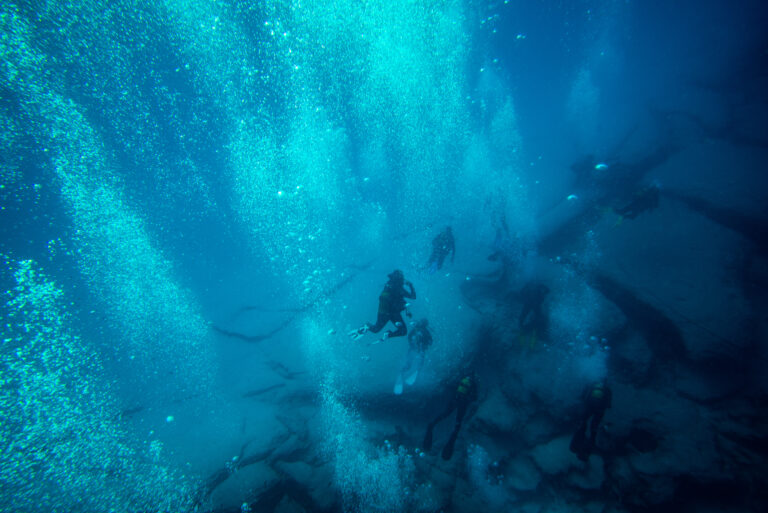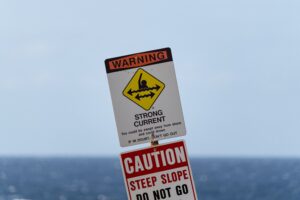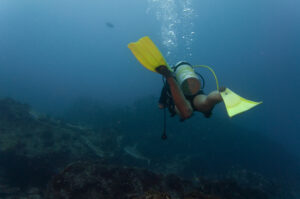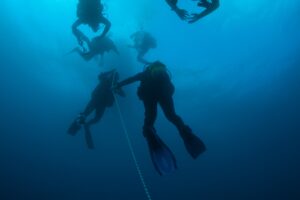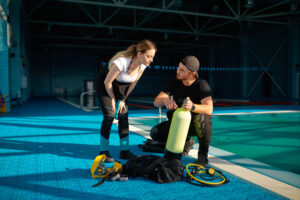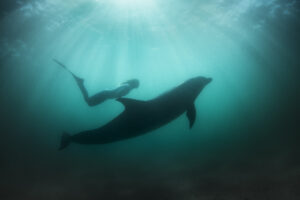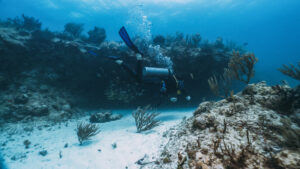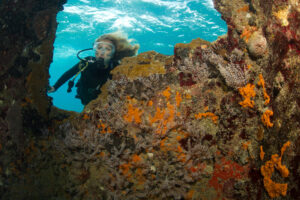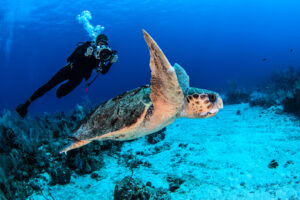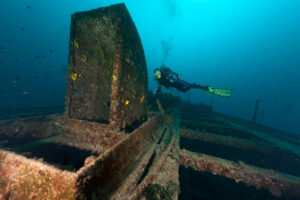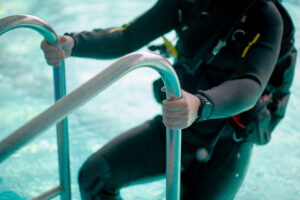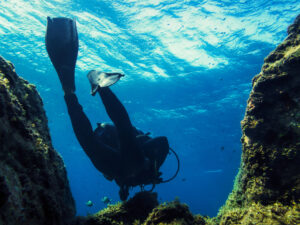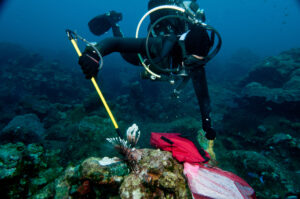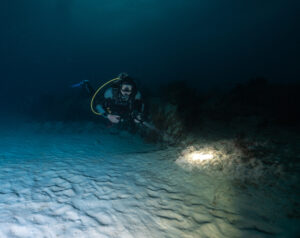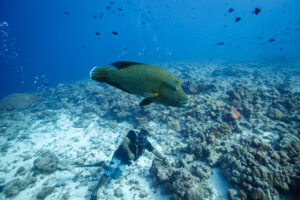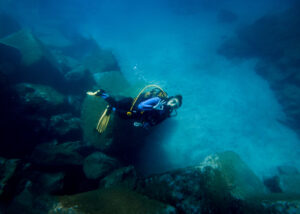What is Overweighting?
Overweighting in scuba diving refers to the practice of using more weight than necessary to achieve neutral buoyancy underwater. Proper weighting is crucial for maintaining control, safety, and efficiency while diving. Overweighting can occur due to various factors, including misconceptions about the amount of weight needed, incorrect gear configuration, and psychological influences. Understanding the implications of overweighting and how to manage it is essential for divers of all levels to ensure a safe and enjoyable underwater experience.
Historical Background
The concept of proper weighting has evolved significantly since the early days of scuba diving. Initially, divers used rudimentary equipment and had limited understanding of buoyancy control. Early diving weights were often makeshift objects like rocks or lead ingots strapped to the body. As technology advanced, dedicated weight belts made of lead and other materials became standard equipment. These belts allowed for more precise weight distribution and better control underwater.
The development of buoyancy control devices (BCDs) in the 1970s marked a significant milestone in diving. BCDs enabled divers to adjust their buoyancy more effectively by adding or releasing air from the bladder. This innovation, combined with the use of weight belts, significantly improved divers’ ability to achieve and maintain neutral buoyancy. However, despite these advancements, overweighting remained a common issue, often due to a lack of proper training or misunderstanding of how much weight was truly necessary.
Over the years, dive training agencies have placed increased emphasis on proper weighting techniques. Modern training programs include buoyancy checks and weight adjustment exercises to help divers determine the correct amount of weight needed for different conditions. Despite this progress, overweighting continues to be a prevalent issue, highlighting the need for ongoing education and awareness in the diving community.
Causes of Overweighting
One of the primary causes of overweighting is the misconception about the weight needed for different water types. Many divers assume that they need the same amount of weight in both saltwater and freshwater, leading to incorrect weight adjustments. Saltwater is denser than freshwater, providing more buoyancy, so divers generally need more weight in saltwater to achieve neutral buoyancy. Failing to account for this difference can result in overweighting when transitioning between different diving environments.
The type of diving gear and environmental factors also play a significant role in determining the amount of weight required. Factors such as the thickness of the wetsuit, the type of tank (aluminum or steel), and the amount of air in the tank at the beginning of the dive can all affect buoyancy. Divers who do not consider these variables may end up carrying excessive weight to compensate for perceived buoyancy issues, leading to overweighting.
Psychological factors can also contribute to overweighting. Some divers feel more secure with extra weight, believing it will help them stay submerged more easily. This mindset can stem from a lack of confidence in buoyancy control skills or fear of floating uncontrollably to the surface. Additionally, new divers may follow the advice of more experienced divers without fully understanding their own buoyancy needs, leading to overweighting based on misguided recommendations.
Risks and Consequences of Overweighting
Overweighting can have several physical risks that negatively impact a diver’s experience and safety. One of the most immediate effects is difficulty in buoyancy control. Excessive weight makes it challenging to achieve and maintain neutral buoyancy, leading to constant adjustments and increased air consumption. This not only shortens bottom time but also adds unnecessary stress and fatigue, detracting from the overall enjoyment of the dive.
Safety risks associated with overweighting are significant. Managing ascent rates becomes more difficult with excess weight, increasing the risk of rapid ascents and potential decompression sickness. Proper ascent rate control is crucial to allow for the safe release of nitrogen absorbed during the dive. Overweighted divers may struggle to achieve a controlled ascent, leading to unsafe practices and potential health hazards.
The environmental impact of overweighting is another critical concern. Poor buoyancy control can result in divers unintentionally damaging fragile marine ecosystems. Kicking up sediment, breaking corals, and disturbing marine life are common consequences of improper buoyancy. This not only harms the underwater environment but also affects the visibility and experience for other divers in the area. Promoting proper weighting practices is essential to minimize these negative impacts and preserve marine habitats.
Managing and Avoiding Overweighting
Accurately determining the necessary weight is the first step in managing and avoiding overweighting. Buoyancy checks are a fundamental practice that should be performed at the beginning of each diving session. Divers can perform a buoyancy check by floating at eye level with an empty BCD and holding a normal breath. If they float at this level without sinking or rising, their weight is likely appropriate. Adjustments can be made by adding or removing small increments of weight until neutral buoyancy is achieved.
Training plays a crucial role in understanding proper weighting. Dive courses often include exercises and drills to help divers become proficient in buoyancy control. Continuous practice and refinement of these skills are essential for maintaining proper weighting over time. Additionally, divers should be encouraged to seek guidance from instructors or experienced divers when unsure about their weight needs, rather than relying on guesswork or outdated advice.
Gear configuration and regular maintenance are also vital in managing weight. The placement of weights on the body can significantly affect buoyancy and trim. Integrated weight systems, trim pockets, and ankle weights can help distribute weight more evenly and improve overall buoyancy control. Regular maintenance of gear, including BCDs and weight belts, ensures that equipment functions correctly and does not contribute to buoyancy issues. Divers should periodically reassess their weight needs, especially when using new or different gear.
Case Studies
Several real-life examples illustrate the impacts of overweighting and highlight the importance of proper weight management. One such case involved a novice diver who, out of fear of floating to the surface, added an excessive amount of weight to their belt. During the dive, the diver struggled with buoyancy control, leading to rapid air consumption and fatigue. The added stress caused the diver to ascend too quickly, resulting in decompression sickness. This case underscores the critical need for proper training and confidence in buoyancy skills to avoid such dangerous situations.
Another example involved an experienced diver who transitioned from freshwater to saltwater diving without adjusting their weight. Assuming the same weight would suffice, the diver found themselves significantly overweighted. This miscalculation led to difficulties in maintaining a stable depth and caused damage to the coral reef as the diver unintentionally made contact with the environment. This scenario highlights the importance of understanding the differences in buoyancy between various water types and the need for accurate weight adjustments.
A third case study focused on a diver using a new, thicker wetsuit without recalculating their weight needs. The increased buoyancy of the thicker wetsuit required additional weight, but the diver did not compensate for this change. The result was poor buoyancy control, leading to constant adjustments and increased air consumption. The diver’s experience was marred by frustration and physical discomfort, emphasizing the necessity of considering all factors that affect buoyancy when determining weight requirements.
Key Takeaways
Proper weight management is essential for safe and enjoyable scuba diving. Overweighting can lead to significant physical, safety, and environmental risks. By understanding the causes of overweighting, performing accurate buoyancy checks, seeking proper training, and maintaining gear, divers can avoid the pitfalls of excessive weight. Emphasizing the importance of these practices will help ensure that divers achieve the best possible experience while protecting themselves and the underwater environment.

